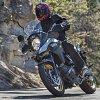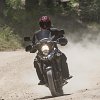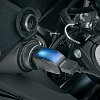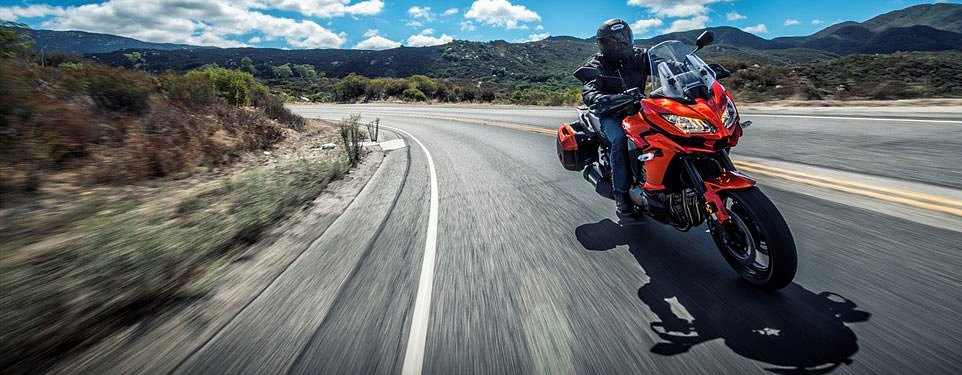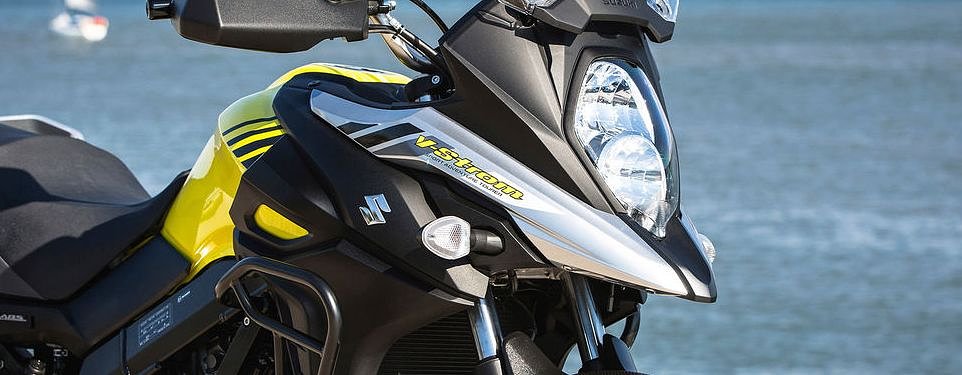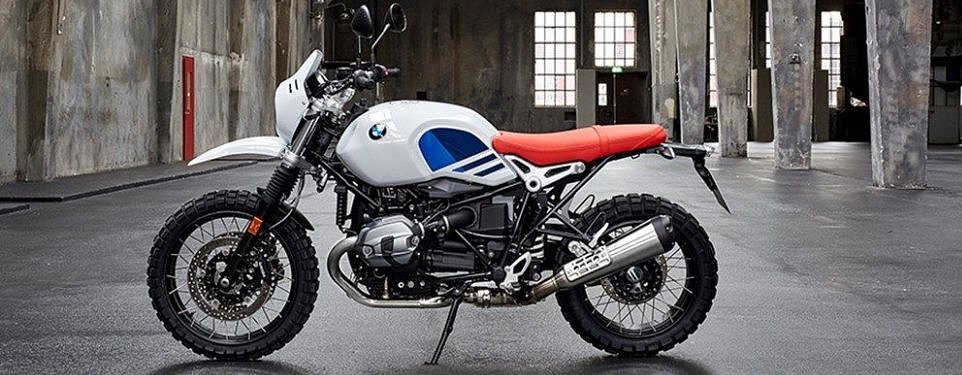“This is the first time we’ve shown the V-Strom being ridden aggressively in the dirt,” says Suzuki’s Senior Product Marketing Specialist, Avery Innis, showing us a preview of some advertisements for the new V-Strom.
It’s a new positioning for Suzuki’s “Sport Adventure Tourer.” Does that mean the newest members of the “Stromtrooper” family are now off-road warriors like the DR Big Dakar racer that inspires their new beak-focused styling? Well, no. But they are still excellent all-around options at a good price point, made better this year thanks to some significant updates.

Before we talk about what’s new this year, let’s have an abridged history lesson: The V-Strom lineup started in 2002 with the DL1000. Two years later, Suzuki offered a smaller version of the Strom using the motor from the SV650. It was an instant hit and outsold its bigger brother 2:1. It also got the adorable nickname of the Wee-Strom.
Over the years, both bikes received updates like increases in horsepower and standard ABS and Suzuki has made a slate of changes this year. The 650 is more popular, so let’s start there.
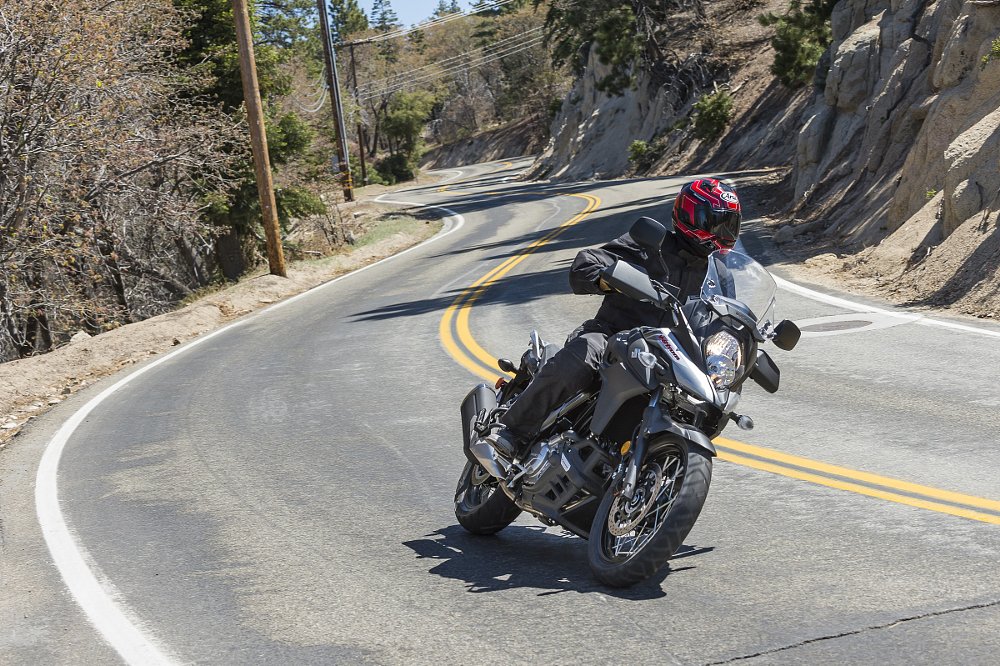

2017 Suzuki DL650 V-Strom
Over the last 13 years, the Wee-Strom has been one of the best bargains in motorcycling. Though the MSRP has increased $300 for 2017 to $8,799 ($9,299 for the XT), several minor updates ensure that it’s still an excellent value. Despite all the additions, Suzuki was able to cut down weight by two pounds: Suzuki says the base model now weighs 470 pounds and the XT weighs 476. No matter which version you select, this is one of the easiest motorcycles to ride I’ve ever hopped on, due to a suite of electronic systems, all of which are new this year.
Firing up the motor, you’ll encounter Suzuki’s Easy Start system. If the bike is in neutral, you don’t have to pull in the clutch. Just tap the starter button and the bike figures out how long it needs to crank the starter to fire up the motor. Don’t worry, there’s a hard limit to how long it will crank so you don’t burn out the starter or kill your battery. You may be asking yourself, “So what?” Well, when I briefly rode a V-Strom 1000 during the day, I learned that you have to pull the clutch in, even in neutral, when starting it up.
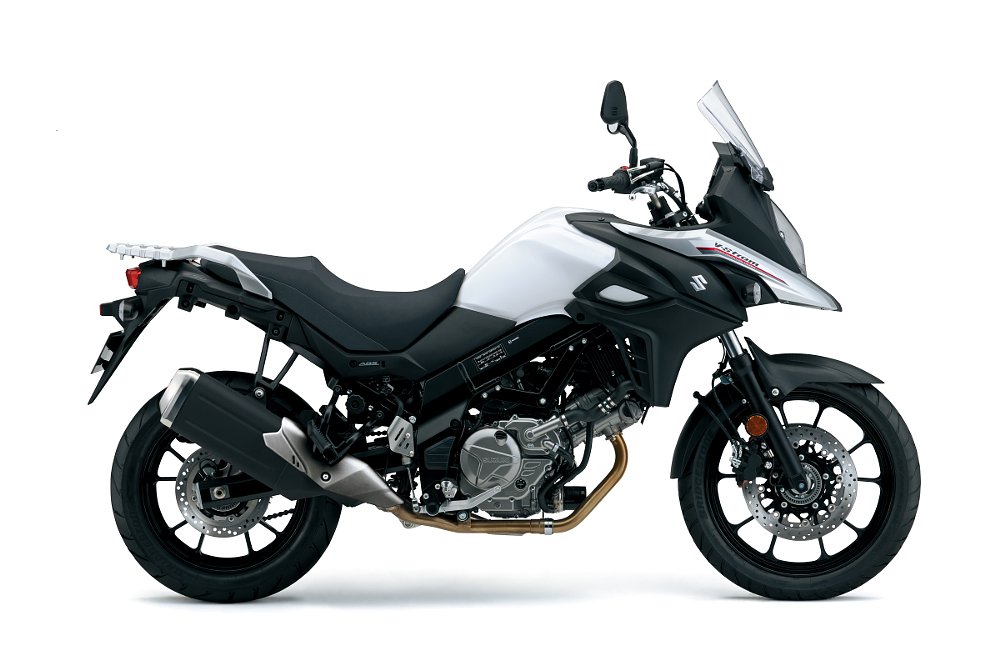
The Low RPM Assist kicks in as you pull away from a start. The throttle bodies have an electronic idle speed control and they will slightly increase rpm as you bring the clutch into the friction zone. This dramatically reduces the chances that you’ll stall from a start, and it slightly smooths out power delivery at low speeds.
Lastly, the 650 gets traction control, which pulls information including front and rear wheel speed, crank position sensor, gear position, and throttle opening to restrict power output if it detects you’re having fun wheel spin. Suzuki calls it “Three Mode TCS,” though it’s really just two levels and, thankfully, an Off option. You can switch between levels while moving as long as the throttle is closed.
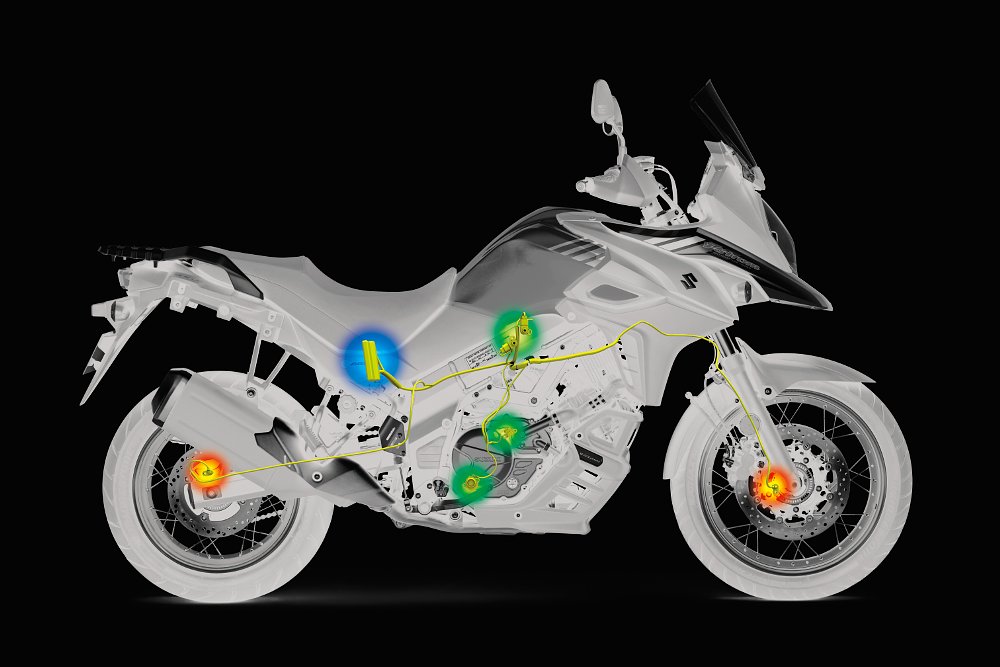
Supplying the power for the traction control to deal with is the 645 cc V-twin, which borrows some improvements from the newest SV650 mill — low-friction resin-coated pistons, SCEM-coated (Suzuki Composite Electrochemical Material) cylinders, dual-spark heads, and new camshafts. Also new are 39 mm throttle bodies utilizing SDTV (Suzuki Dual Throttle Valve) and 10-hole long-tip fuel injectors. Combined, Suzuki says these changes yield an additional 5.3 horsepower for a total of 69.73 at 8,800 rpm.
One of the complaints from previous generations of this model was buffeting from the windscreen. Suzuki acknowledged that this was a problem and said that they’ve fixed it with a new design. Based on the approximately 60 miles I had on the bike, I agree. Windscreen height is adjustable (but it requires a tool, so you won’t be doing it on the fly) and in the standard position I found the airflow management to be just fine from a buffeting standpoint. At six feet, two inches tall, I normally find that stock windscreens throw wind right at my helmet. That was also the case here, but I never felt side-to-side shaking or buffeting.
Another issue from last year’s bike was the design of the exhaust. The location of the muffler forced the right-side luggage to stick out, increasing the width of the bike. Suzuki has redesigned the exhaust so that it goes under the frame. This makes the tail of the bike much narrower but it comes at the expense of ground clearance.
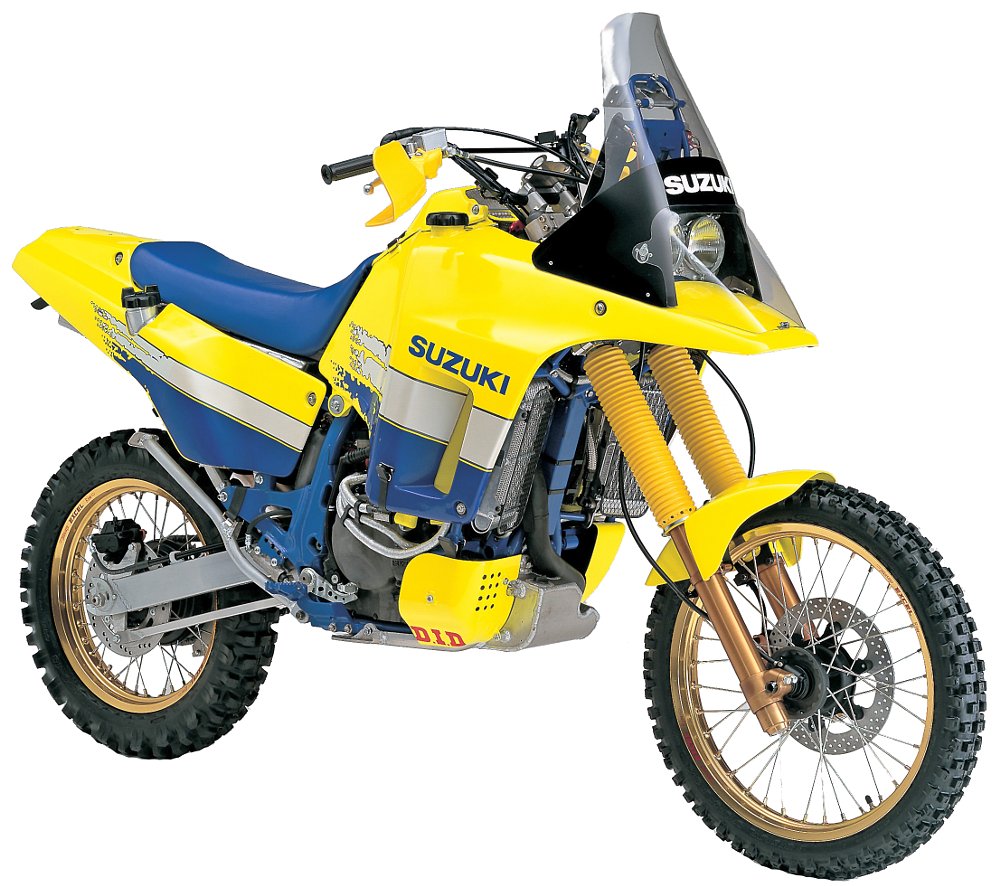
Feeling adventurous?
For five extra Benjamins, you can ride out of your Suzuki dealership with an XT model, which gets some bolt-ons to make you more interesting on social media:
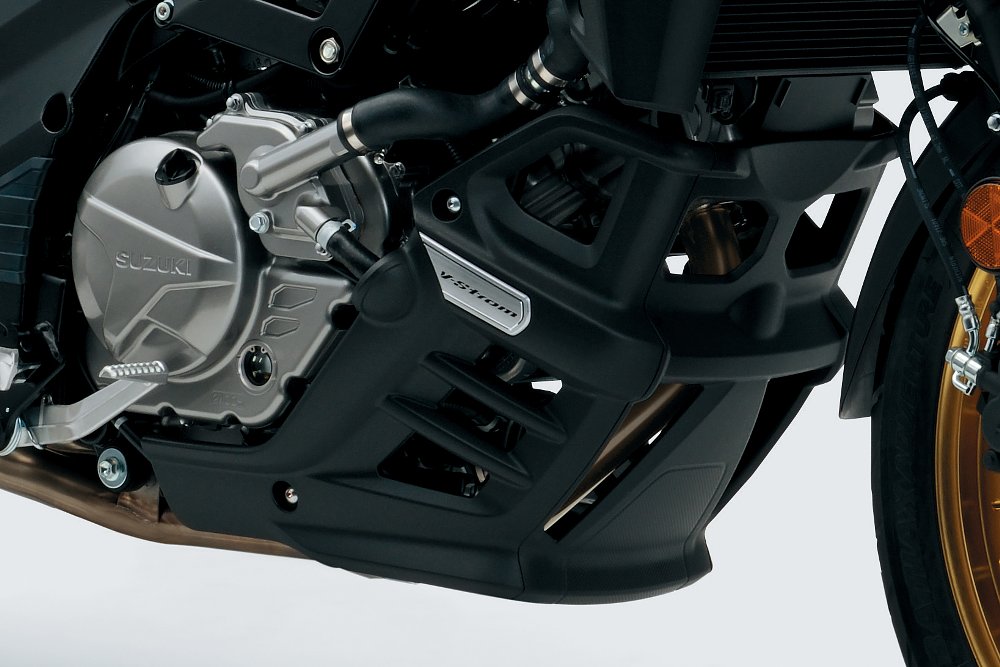
- Engine protection: The XT gets an engine cowl but Suzuki was quick to admit that it is only suited for short rides on fire roads. Those of you who are looking to tackle more challenging terrain will need to get the Suzuki accessory skidplate made by SW-Motech or look to the aftermarket.
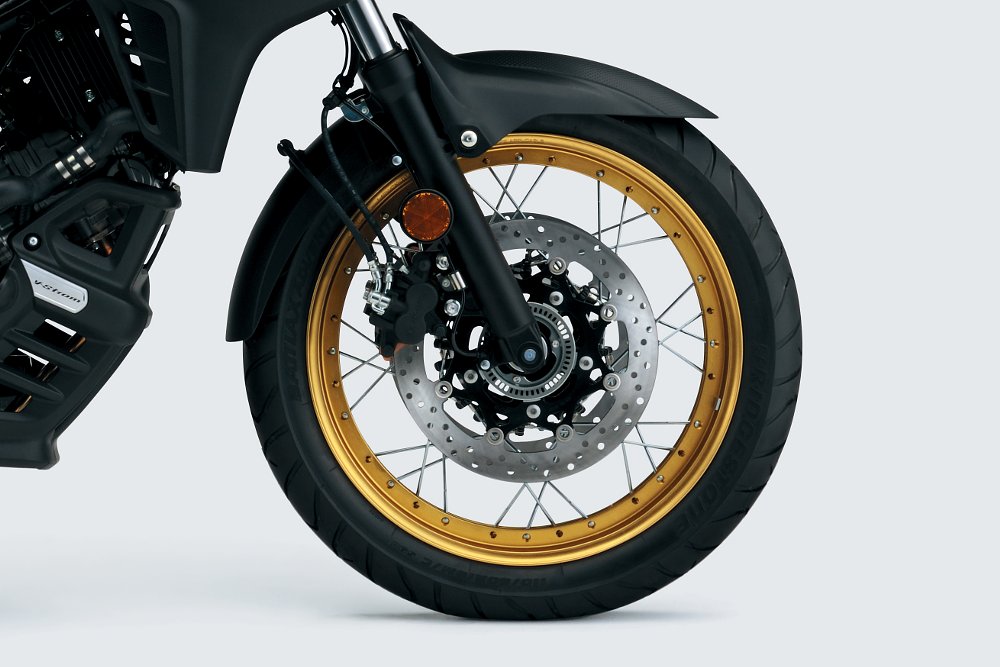
- Paint: While the base 650 is only available in Pearl Glacier White, XT owners will get to choose between Pearl Marble Black or Champion Yellow No. 2 — the latter of which also gets gold-anodized wheels to more closely resemble the DR Big racer.
If it was my money, I’d splurge for the XT but that’s mostly an aesthetic decision, as the bikes feel the same on or off-road. The idea of the XT is interesting but the execution is lacking. It should come with more aggressive rubber, a metal skidplate and more ground clearance.
I also think both the base model and the XT should come with the ability to turn ABS off — or at least have an Enduro setting that allows you to lock up the rear when necessary. After riding the 650 at the press intro, I rode home on a DL1000 and took some dirt detours. On steep descents in the dirt, the rear brake becomes useless if the surface isn’t perfectly hard and smooth.
A unified front... and rear
A big priority for Suzuki this year was to make the 650 more like the 1000 and unify the model lineup. This was done in two main ways. First, with styling. I’m usually not a fan of the “beak” styling cue that has taken over the adventure bike market, but Suzuki gets a pass in my book because they debuted it with the DR Big Paris-Dakar racer.
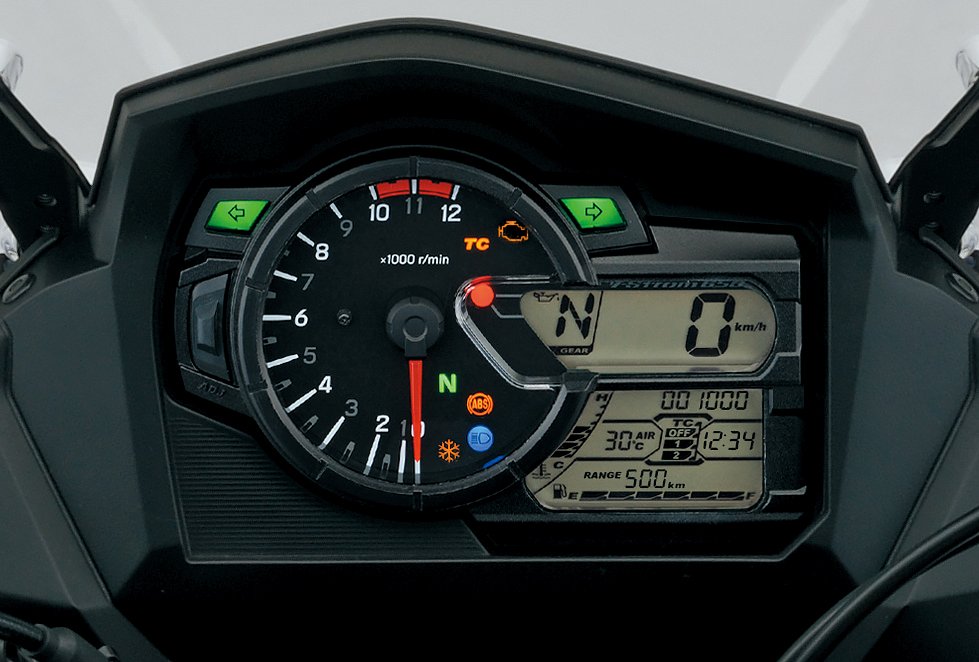
The 650 now looks like its bigger brother, thanks to a redesigned fairing with stacked headlights and gauges that look like they were pulled straight from the 1000. At first glance, I thought the LCD display was too cluttered, but priority is given to the information that matters most so that you can read what you need without taking your eyes off the road for too long.

I do have a gripe with how the rider is supposed to control the LCD display, though. There are handlebar controls — one giant MODE button that lets you go up and down, as well as a SEL button which only seems to grant you access to selecting the level of traction control. Suzuki already has run wiring and the required electronics up to the handlebar controls, so why do I have to take my left hand off the grip and reach for the dashboard to press a lonely “ADJ” button if I want to perform a task like resetting a trip meter? All the buttons should be consolidated where a rider can access them with his or her left thumb — there’s easily enough room to make that happen.
Still looking at the styling, the paint schemes are nearly identical. It can be difficult to tell the models apart from a distance, but the easiest way to identify if you’re looking at a Wee-Strom or a V-Strom is to look at the seat — the 1000s have “SUZUKI” on the sides.
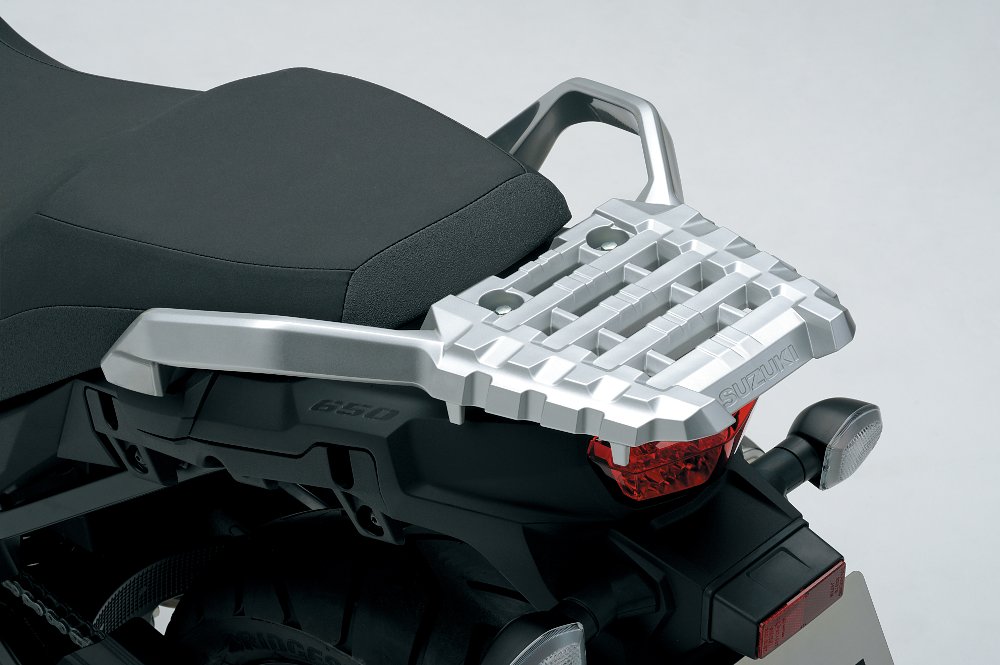
The second way that Suzuki brought the models together was by redesigning the 650 subframe with integrated mounting points and a resin rear rack that allow both bikes to share the same luggage, among other accessories. This makes it easier for dealer support and the aftermarket to develop products for the entire V-Strom line.
So, Suzuki made lots of changes to the 650 for 2017, but they didn’t ignore the 1000 in the process.
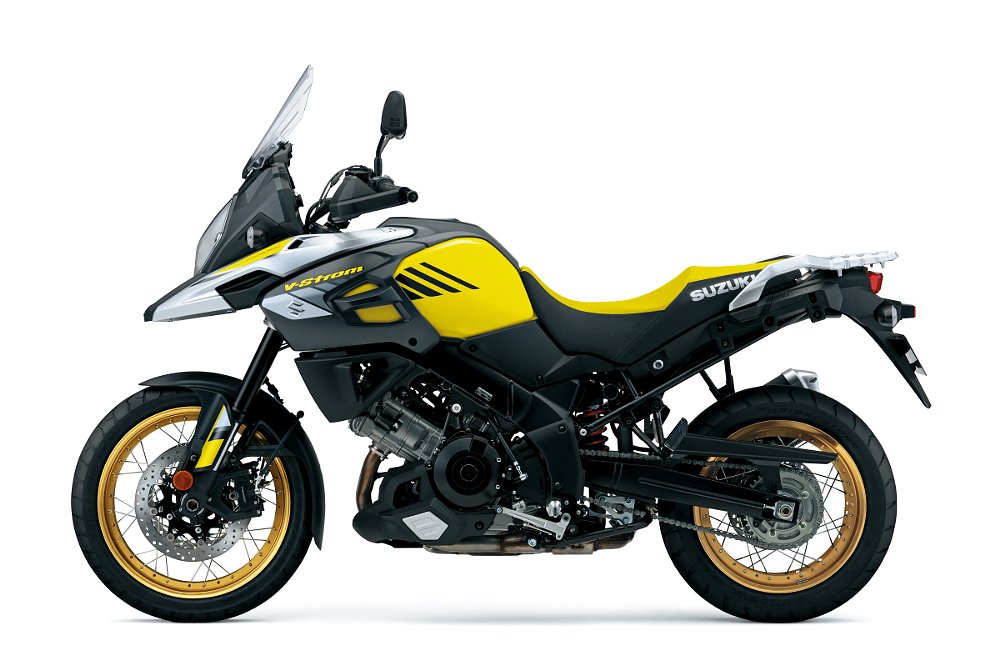
Big brother: The 2018 Suzuki DL1000 V-Strom
While both the 650 and the 1000 will be available immediately, Suzuki has decided to skip the 2017 model year with the V-Strom 1000 and call it a 2018. Labeling aside, the real news for the 1000 is the addition of a Bosch Inertial Measurement Unit (IMU). It collects data in five directions across three axes: roll (left and right), yaw (left and right), and pitch (down). This information is then combined with wheel speed (measured 50 times a second) and then fed to Suzuki’s “Motion Track ABS & Combined Braking” system. You’ve probably informally heard of this as “cornering ABS.” When the V-Strom 1000 is upright, the ABS behaves as it does in any other motorcycle. But if you’re leaned over, the ABS will apply pressure as needed to keep the bike stable.
For example: Let’s say you’re in a corner and a deer jumps out in front of you. Panicked, you grab a fist full of front brake and you don’t touch the rear at all. Once the front brake pressure reaches a certain threshold, the bike will automatically apply force to the rear brake to keep the bike stable. Note that these aren’t linked brakes — as long as you don’t trigger the ABS, you’ll have fully independent control of the front and rear brakes.
The styling also gets some minor tweaks, with a redesigned fairing and a reshaped, 49 mm taller windscreen to address the buffeting concerns of generations past. Like the 650, the windscreen is height adjustable. Unlike the 650, you can also adjust between three settings of pitch and you can do it without tools while moving.

Editor's note: This story originally quoted the U.S. MSRPs provided by Suzuki at the press launch for the V-Strom 1000 models. Days later, however, Suzuki raised the MSRPs by $300, which caused some confusion among readers who saw different numbers on the Suzuki website than what appeared here. The story has been updated with the current MSRPs:
- DL1000: $12,999
- DL1000XT: $13,299
The drivetrain is now Euro4 compliant, thanks in part to twin catalyzers in the exhaust. Suzuki says this has no effect on the peak horsepower figure (99.23 at 8,000 rpm), but it does cost you 1.4 foot-pounds of torque from last year (now down to 74.5 at 4,000 rpm). Your butt dyno won’t be able to tell the difference but you can feel good about saving the environment.
Rounding up the changes are some now-standard features that used to be optional — specifically the handguards, larger bar end weights, and the lower engine cowl. Those are standard on both the base and the XT models, while only the XT gets a larger diameter, tapered aluminum handlebar. MSRP for the base model is $12,999 and $13,299 for the XT.
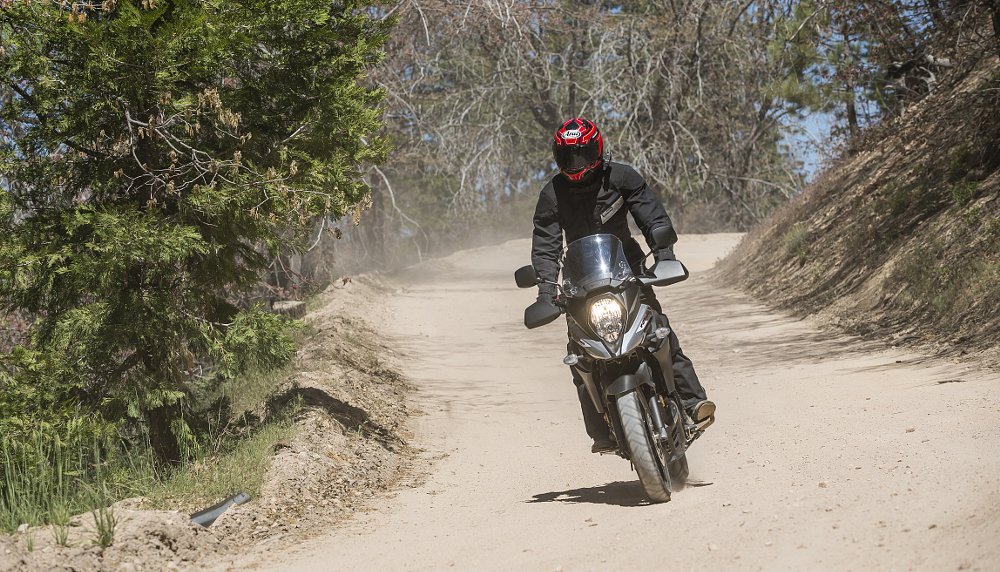
Conclusion? Pick one
Both versions of the V-Strom are competent, reasonably priced motorcycles. They are extremely easy to ride and will do just about everything you ask of them for hundreds of thousands of miles. All that was true about last year’s bikes, and this year they’re even better.
The market for these ADV-lite bikes can be tough. A lot of the marketing is based on image and I think riders sometimes aren’t honest with themselves about how often they’re actually going to be riding off-road. If your style of riding is all about covering hundreds of miles in a day while exploring the occasional fire road that you spot along the way, then you’ll be happy with a V-Strom.
Between the two, I think the 650 is the better buy. Sure, you give up 30 horsepower, but it’s powerful enough for all real-world tasks and you’ll feel the 38-pound difference in weight at low and medium speeds. Compared to the competition, I think the V-Strom 650 has a good balance of excellent street manners and passable dirt characteristics.
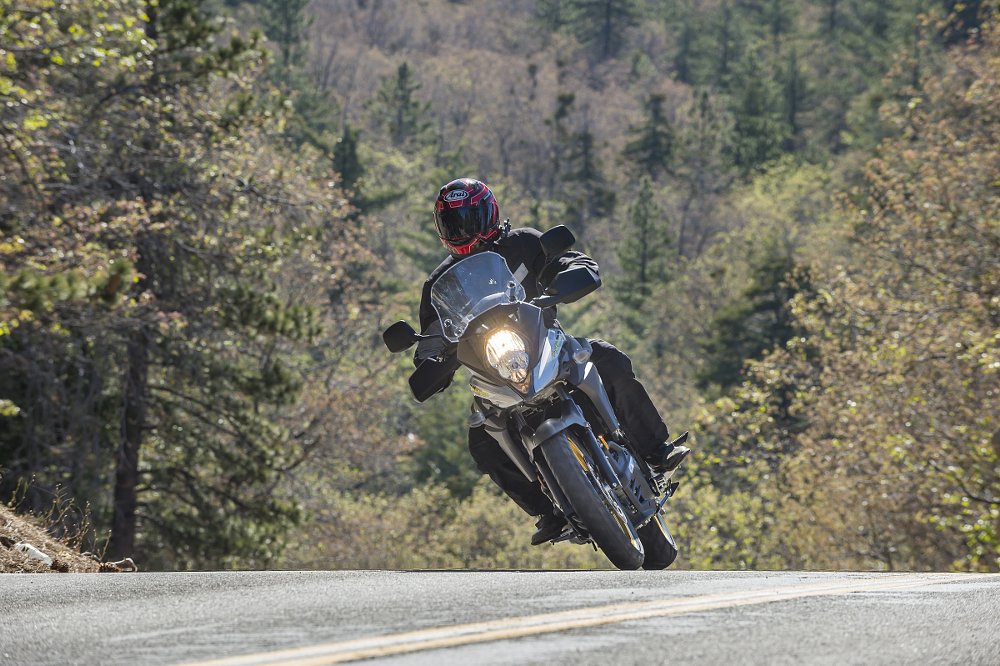
If you’re never going off-road, look at the Kawasaki Versys 650. For something more dirt-oriented, you have a few options, including Suzuki’s DR650.
On the other hand, I can’t see a reason to get a V-Strom 1000 over Honda’s Africa Twin.
Historically, the V-Strom 650 has been more popular than its bigger brother — I don’t think that will change any time soon.






